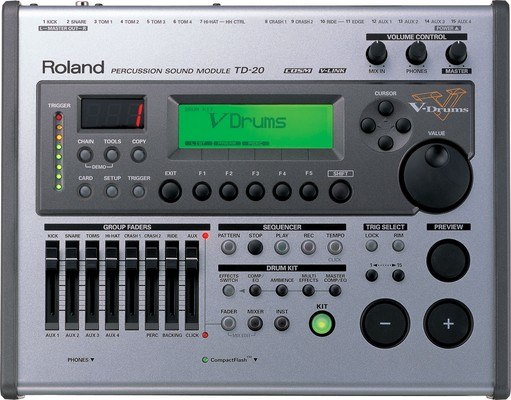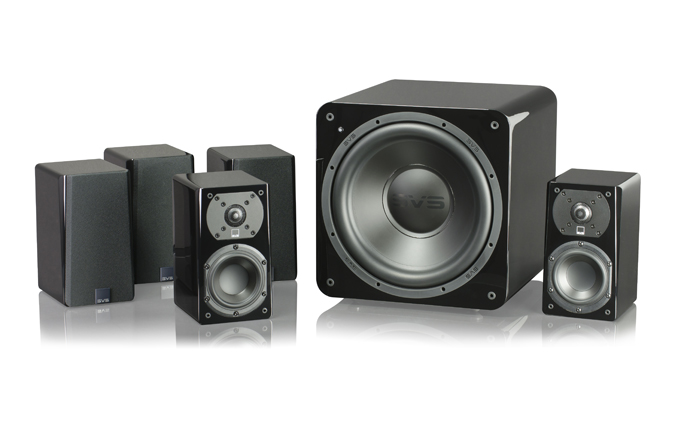Roland V-Drums TD-20 Review

Any drummer interested in electronic drums should really take a hard look at this module.
When I first pulled the TD-20 out of the box, I noticed a couple of quick things that warmed me up. Already familiar with Roland’s drum module interfaces as an owner of the TD-10, it was nice to see the trigger inputs were no longer stacked on the back and two rows. The CompactFlash slot had moved to the front of the unit, a brilliant move so that drummers can actually change it without reaching behind the module! But the most stunning advancement was the layout of the front panel. Roland, understanding the needs of drummers, has seemingly started shying away from the “make it compact” attitude. While the TD-20 is a little heftier than than most other drum modules, the flagship module now has some space to spread things out. In short, easily accessed effects are right there at my fingertips. What used to take me a few button clicks to modify reverbs and effects now take me a few less button clicks. And that can mean all the difference when time is not on my side.
When the unit was powered on, I found myself back in familiar territory. Leave it to Roland to make a good thing better! The software on the TD-20 is nearly identical Roland’s other drum modules. All of the routing and instrument editing is still in the same, easily navigated menus… but now it’s easier! I’ve often found that, in other modules of this class, a user must select the “head” sample and the “rim” sample separately. And this is still the case on the TD-20… however, Roland was kind enough to match “heads” and “rims” to one another as well. So now, selecting an entirely new drum (“head” and “rim”) is just the turn of a dial, but you can edit further. This has always been a pet peeve of mine and I’m glad we’re past that era!
Most notably, the V-Edit engine has received some major improvements! I have often found artificial changes to artificial instruments feel artificial. The samples begin to lose their subtle characteristics that make them sound like drums! But Roland has put a lot of time in trying to get it right, and I have to say well done. Shell edits now resonate like the shells they are modeled after, assuming the characteristics of the instrument AND the material it is made of. Dampeners no longer feel like they cut the samples short. Rather, they actually modify the tone and response of the instrument.
I appreciate the efforts Roland has put forth in making a good thing better. Any drummer interested in electronic drums should really take a hard look at this module. It is simple, but deep. And extremely flexible.










